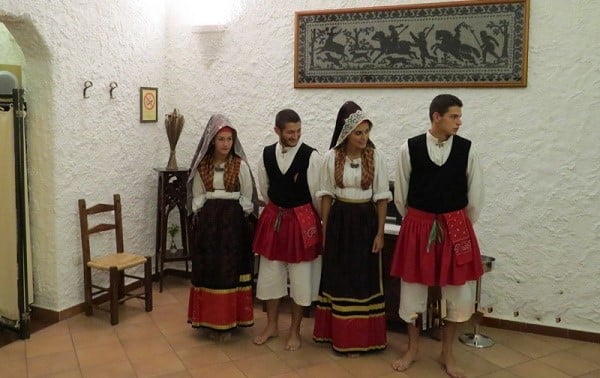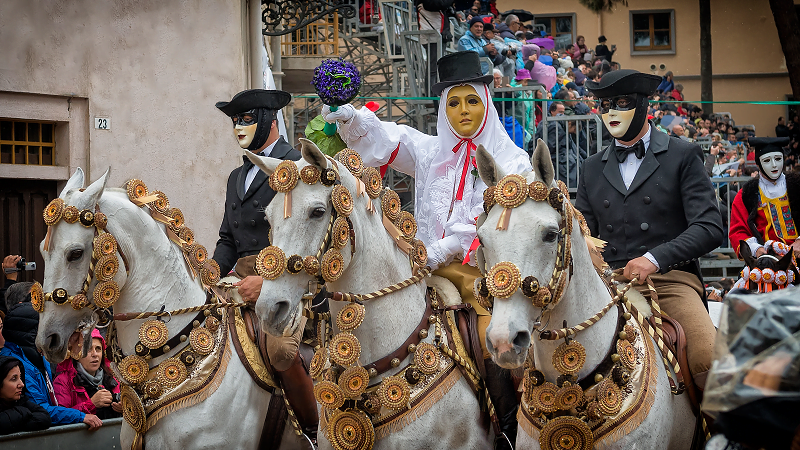The Magic of Sartiglia in Sardinia. It’s on in February, Lets Go.
Do you want to go back 500 years for a day and participate in a spectacular & unique Carnival event known all over the world, where mysterious horsemen wearing ancient traditional costumes and masks tempt fate with dangerous and spectacular evolutions atop their horses. This happens in the magical, pristine Island of Sardinia, where it seems that time has stood still. We are talking about Sartiglia, and if you go there for Carnival you’ll have the chance to eat delicious traditional food and drink exclusive wines.
Carnival Gourmet in Sardinia

But what is Sartiglia?
From the last Sunday of the Carnevale to the following Tuesday, the city of Oristano in Sardinia takes on a medieval, mystical feeling with “Sa Sartiglia”, a three-day feast that culminates in a medieval jousting event after which the entire festival is named. A nearly constant drumbeat accompanies the centuries-old celebration as participants in traditional Sardinian and Spanish costume perform amazing stunts on the horseback and ride at full gallop to spear a star or a ring.
The king of the festival is an arbitetrator called Su Cumponidori, who is elegant and traditionally dressed for the event with young girls called “Sas Massaieddas”. The master wears a white, expressionless mask, small black hat, silk ribbons, lace veil, puff-sleeved white shirt, and a leather jacket attached to a short skirt on the front. Su Componidori is androgynous, representing male and female equally and is considered a demigod sent to bring luck and protect from evil spirits.
During the Sartiglia horsemen participate in events that test their riding skills. Aside from the Race to the Star, some of the most exciting parts of the festival are dangerous, acrobatic performances on horseback. Su Cumponidori’s performance of “Sa Remada” during which he rides the entire route lying on his back while the horse is at full gallop.
It is believed that the festival’s roots are in the 11th century Saracen tournaments but the celebration has become more theatrical and linked to the Carnevale throughout the years of Spanish rule.

